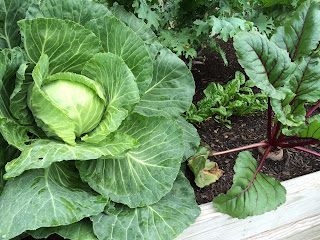Heirloom varieties, that produce quickly, and grow nutritious foods that can be easily preserved (dried) are the best Prepper seeds. Having hybrid seeds to use in the early stages is okay as long as they don't cross pollinate with the heirloom varieties and mess up your seed stock.
Foods that store for long periods like beans, peas, sorghum and corn dry and preserve well so I consider these as essential. Rice, wheat and oats are good, but harder to grow and harvest. Potatoes also preserve fairly well when kept in burlap type bag in a cool dark place. Citrus fruits will last much longer than most other fruits if left on the tree (not picked). Nuts like pecans will store for long periods if kept in a cool dry place.
Fast producing seeds like turnips are edible in about 20 days even in cool weather. Plus turnip seeds are low cost. As a part of my charity plan, covered in the Prepper Handbook, I have a lot of them and at the first sign of anarchy, I will plant them all around the church by the highway to help others have food.
Foods that grow back year after year with out re-planting are good. Asparagus returns each year, is very hardy, nutritious, delicious and insect resistant. If I could only have one vegetable, this would be the one; just remember to cut it down to 2" above the ground in the fall when the foliage turns brown and only harvest about half of what grows up, leaving some to reproduce. Do not harvest the first year. Fruit and nut trees are some other good examples and nuts store very well. Nut trees take many years to produce so plant them soon and locate some wild ones in the woods and remove any vines or other plants that may be choking them or competing for the nutrients and sunlight.
Seasonal plants are important too. You want some foods that plant in the later winter or early spring and ripen quickly (like turnips), but also some that ripen late in the fall or winter like pumpkins and persimmons. Having a green house for year-round food could be a huge advantage.
While any food is better than starving, it is also good to select seeds that produce foods that you like to eat and would eat on a normal basis. This is good criteria to consider, but secondary to the others. For example, most of the tender sweet hybrid corn that we enjoy cannot be used for seed as they will not grow or produce much corn if any. During the summer growing season, you can be eating fresh vegetables while you store most of the others for the winter. Canning is a good way to store vegetables, but requires hundreds of jars and lids. Drying is a more sustainable way but only works well for some foods.
Part of a good Seed for Survival plan needs to include rotation. Seeds get old and won't grow after a few years. Keeping them refrigerated helps, but what I do is to write the date on them when they arrive. Then everything more than two years old, I try to plant even if it is in a hidden garden in the country side, along the road or creek or in a meadow, by a lake. I even throw a few in the creek to wash down stream, to hopefully take root and grow.
Here is a list of seeds/foods that I prefer:
- Yellow Dent Corn (feed and meal)
- Yellow Bantam Corn
- Sorghum (chicken feed & good meal)
- Pinto Beans
- Black Eyed Peas
- Purple Hull Peas
- Cream Peas
- Blue Lake Green Beans
- Kentucky Wonder Green Beans
- Yellow Crook Neck Squash
- Beef Steak Tomatoes
- Mary Washington Asparagus
- Jersey Giant Asparagus
- Kale
- Broccoli
- Clemson Spineless Okra
- Red Potatoes
- Irish Potatoes
- Onions - Yellow Sweet Spanish
- Bell Peppers - California Wonders
- Cayenne Peppers
- Small Sugar Pumpkins
- Danvers Carrots
- Turnip - Purple Top White Globe
- Wheat (winter & summer varieties)
- Oats
- Rice
For additional information see the following links:
Blog Table of Contents;
Getting Started (Water)
Or click on a label below for similar topics.

No comments:
Post a Comment
Note: Only a member of this blog may post a comment.